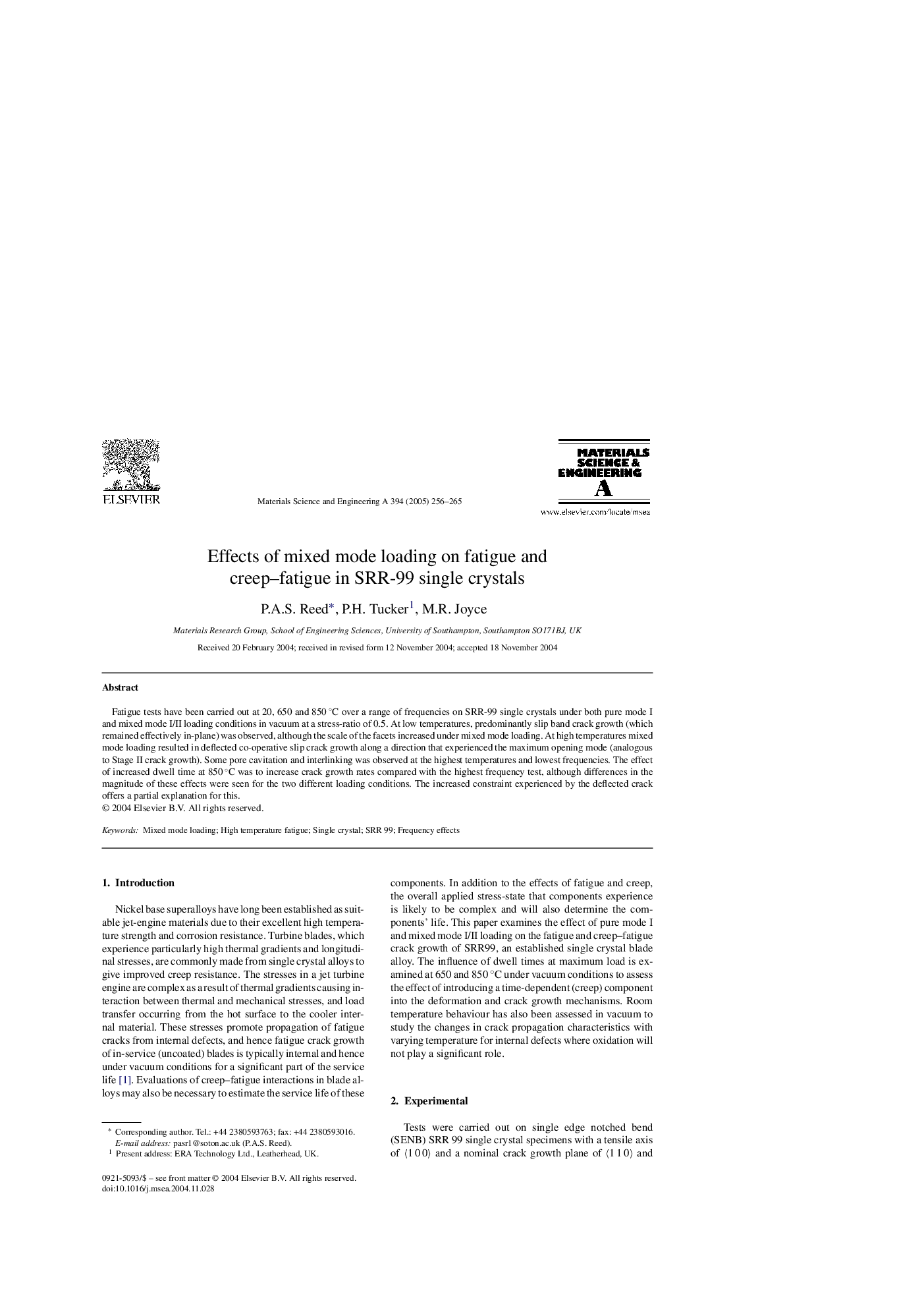| Article ID | Journal | Published Year | Pages | File Type |
|---|---|---|---|---|
| 9796452 | Materials Science and Engineering: A | 2005 | 10 Pages |
Abstract
Fatigue tests have been carried out at 20, 650 and 850 °C over a range of frequencies on SRR-99 single crystals under both pure mode I and mixed mode I/II loading conditions in vacuum at a stress-ratio of 0.5. At low temperatures, predominantly slip band crack growth (which remained effectively in-plane) was observed, although the scale of the facets increased under mixed mode loading. At high temperatures mixed mode loading resulted in deflected co-operative slip crack growth along a direction that experienced the maximum opening mode (analogous to Stage II crack growth). Some pore cavitation and interlinking was observed at the highest temperatures and lowest frequencies. The effect of increased dwell time at 850 °C was to increase crack growth rates compared with the highest frequency test, although differences in the magnitude of these effects were seen for the two different loading conditions. The increased constraint experienced by the deflected crack offers a partial explanation for this.
Related Topics
Physical Sciences and Engineering
Materials Science
Materials Science (General)
Authors
P.A.S. Reed, P.H. Tucker, M.R. Joyce,
